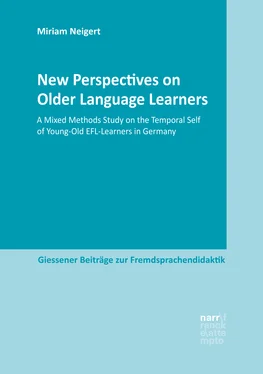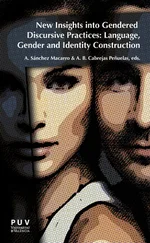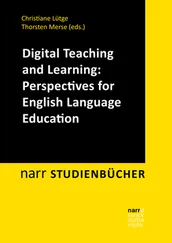According to him, the use of Selbst in these situations actually refers to various psychological phenomena such as a general change of lifestyle, self-esteem, or self-confidence. Mummendey (2006: 16f.) points out that keeping in mind that these people are not professional psychologists, the way they (mis-)use the term self is no problem. When it comes to researchers in the field, however, the usage of self-related terms is a different story and he cautions researchers to avoid such reification of psychological phenomena. Even though taking caution with the use of terminology as a researcher is justified, it may in turn erroneously lead to thinking that the two worlds of lay persons’ usage and researchers’ usage of psychological terminology are to remain separate entities which are never meant to impinge upon each other.
But research does not exist in a vacuum and those two worlds do in fact collide at times. This happens, for example, when laypersons are participants in research studies. Researchers such as Mercer (2014) have taken this issue into account by adapting instructions for their studies to participants’ everyday or lay understanding of the self or self-concept: “They [the pilot study participants] were shown the video and asked to evaluate their feelings of confidence. This self-construct was chosen because of its easy comprehensibility for the participants and relatively broad scope.” (ibid.: 166) She used the term ‘confidence’ when instructing participants in her study when, in fact, she was investigating ‘dynamics of the self’. In what ways I have adapted my research instruments (questionnaire and interview) to the self-understanding of my participants, and how this may or may not have an impact on the ethical dimensions of my research will be discussed in chapter four.
Going back to the latter quote by Mummendey, he nevertheless does make a valid point when warning about substantialisiertes Denkgebilde or “reification” (2006: 14). As with the usage of the term Seele (soul), which has been used more widely in research before the 20 thcentury, Mummendey (2006: 18) sees a similar development of reification of the self in psychology, which may trick us into thinking of it as an independently acting entity. He then lists numerous examples of formulations in scientific articles and books, which imply an active role of the self. Other researchers in the field, such as William James (1890: chapter XII.) and John Hattie (1992), also remind their readers of this fallacy. In his book Self-Concept (1992: 242), Hattie takes up Ryle’s (1949) phrase ‘ghost in the machine’ to exemplify how not to approach psychological terms – in this case, self-concept:
The intention is not to reify self-concept. Self-concept is not a ‘ghost in the machine.’ There is no hidden homunculus that sits inside our body that drives our view of the world. The psychological term ‘self-concept’ is no more real than are the notions of locus of control, intelligence, gravity, or electricity. Self-concept exists only in its manifestations.
Even though it may not always be possible to refrain from lending the words ‘self’ or ‘self-concept’ a sense of agency in my formulations, the issue of reification is important to bear in mind when trying to grasp the aforementioned complexity of self-terminology. It is exactly this complexity which requires me – just like other researchers at the beginning of their research – to provide clear-cut boundaries of the terms self-concept and self within the framework of my research. Just as a surgeon needs a sharp knife to perform accurately, a theoretical foundation with sharp edges is required for easy navigation through one’s research project.
So, to start sharpening my terminological edges in this chapter, I will give an overview of some central characteristics of self-concept by, firstly, summarising suggestions regarding its structure taken from relevant research literature; and, secondly, contrasting it with some commonly (mis-)used terms in the areas of second language acquisition (SLA) research and psychology.
Confronting the vast amount of self-terminology, it comes as no surprise that definitions of self-concept are not easy to put down on paper in a concise way. Self-concept has been referred to as beliefs (Mercer 2011a; Canfield & Wells 1976; Pajares & Schunk 2002; Jopling 2002), knowledge (James 1890; Neisser 1988), a theory (Turner & Onorato 1999; Neisser 1988), a perception (L’Ecuyer 1975; Mercer 2011a; Mills 2014; Pajares & Schunk 2002) and cognitive appraisals (Hattie 1992) about our self. At first sight, all of the above terms are attempts to find synonyms for the word concept . But do they express precisely and equally well what a self- concept is? To find an answer to this, I would like to take up the approach by Ulric Neisser (1993) and start by taking a look at the word concept .
3.2.1 Back to Basics: Concepts
What is a concept in the first place? A concept, broadly defined, is what we associate with and what we believe – true or not – about something. This ‘something’ can be concrete like a bird or a dog (“Can it fly? Does it have four legs? Does it have feathers or fur?”); it can also be rather abstract and complex like war or peace (Neisser 1997: 4). Our concepts of these things can overlap, but are never exactly the same, and the extent to which concepts differ or are similar between different individuals can depend on different cultures (Jopling 2002: 45; Hattie 1992). The network of concepts to which a single concept refers can be considered a ‘theory’ (Neisser 1988: 53).
All of the above factors regarding concepts also apply to our concepts of the people around us and, of course, the network of concepts (or theory) we have about ourselves, i.e. our self-concepts. The important thing here is that self-concepts are more about what we believe to be true of our selves, or as Neisser (1993: 3) put it:
Concepts are one thing, reality is another. The same thing can be said of your concept of Ulric Neisser. More important, the same thing can also be said of my concept of Ulric Neisser. Self-concepts never do full justice to the self.
This makes self-concepts something subjective, something idiosyncratic; in other words, we need to keep in mind that the self creates a reality for an individual – one reality out of many. A reality of one’s self also diverges from how others create it from the outside. We can only assume that it is the sum of these created realities of self, which are shaping what is reality as Neisser describes. Since we as researchers are nowhere near being able to measure this objective reality, it is the subjective view of self of the young-old language learner that is methodologically more feasible to capture here in this study – even if not in its totality. In the light of this, ‘beliefs’ and ‘perceptions’ are the most appropriate terms to define self-concept in the context of my research, since they best capture its subjective and dynamic nature.
In the following, I will also use self-concept in both its singular and plural form, which – as we will see – highlights the fact that we can investigate self-concepts in different domains of our everyday life, but that there is at the same time a relatively stable part – the sum of our self-concepts, our theory of self – that is needed to give us a sense of unity (Canfield & Wells 1976; Markus & Wurf 1987; Jopling 1997). Are there other things we can agree on concerning human self-concept? Taking a closer look at different ideas of its structure and formation, which have been proposed by research so far, might present us with more universal characteristics of self-concept.
Читать дальше












